6 Best Grass Types for Tampa, FL
BY DANIELLE GORSKI | APRIL 28TH, 2020 | FLORIDA, LAWN CARE, TAMPATampa offers beachside views and aquatic wildlife for locals and tourists to enjoy. You can enjoy a stroll along Bayshore Boulevard, the United States’ longest continuous sidewalk, before enjoying Tampa’s unique cuisine. With all the bounteous emerald greenery of Tampa’s tropical vegetation, you want a lawn that is just as lush and green.
Warm-season grasses are the best types of grass in Florida since they are able to withstand hot, muggy days and high humidity. Several types of grasses thrive in Tampa’s hot summers and mild winters.
6 Best Grass Types for Tampa
Warm-season grasses are the best kinds of grasses for the Sunshine State. They originate from tropical regions, making them perfect for a subtropical climate like Tampa.
Warm-season grasses thrive in temperatures ranging from 75 to 90 degrees Fahrenheit. This makes warm-season grasses a perfect fit for the Tampa Bay area, since the climate is hot and humid year-round.
1. Bahiagrass
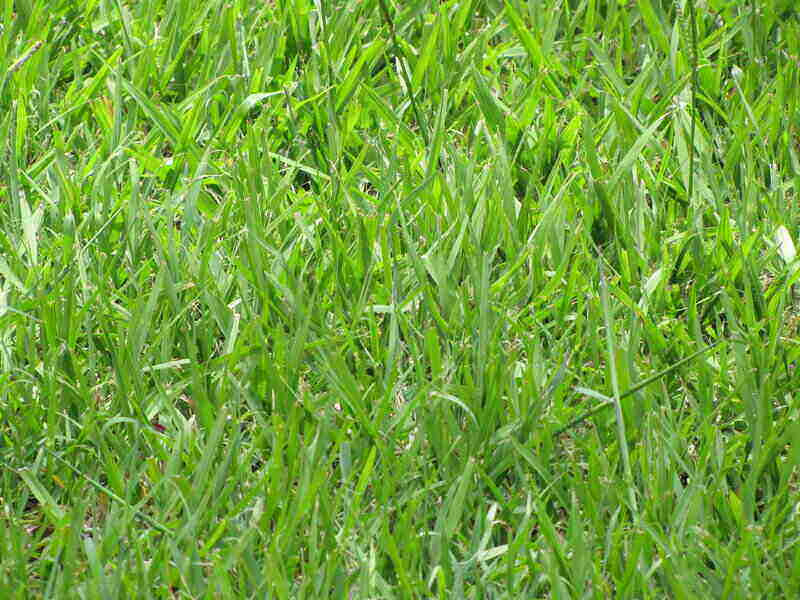
Photo Credit: Forest and Kim Starr / Flickr / CC BY 2.0
Bahiagrass boasts a pleasing dark green hue and an extensive root system that helps it survive drought. Bahiagrass flourishes in full sun, though it isn’t so hardy when faced up against a lot of foot traffic or cold weather. Luckily, Florida’s mild winters make it a great fit for Tampa lawns.
Bahiagrass is adaptable with nearly any type of soil. However, the drought-tolerant grass does not thrive in areas with salt or saltwater spray, so it’s best for more inland Tampa properties. If your yard is patchy because you have poor soil that is sandy or acidic, you might want to try switching to bahiagrass.
Classification: Warm-season grass
Spreads by: Rhizomes
Shade tolerance: Low – needs full sun
Drought resistance: High
Foot traffic tolerance: Low
Maintenance needs: Low; mow 1-2 times a week and fertilize during peak growing season.
Mowing height: 3-4 inches
Potential for disease: Resistant to diseases and insects, although dollar spot is common, and bahiagrass may attract bahiagrass billbugs, fall armyworms, or mole crickets.
Soil pH: 5.5-6.5
Soil type: Poor, sandy, or acidic
Other notes: Bahiagrass needs fertilization during the peak growing season. Luckily thatch isn’t a concern with bahiagrass, so you don’t need to dethatch or aerate your lawn.
2. Bermudagrass
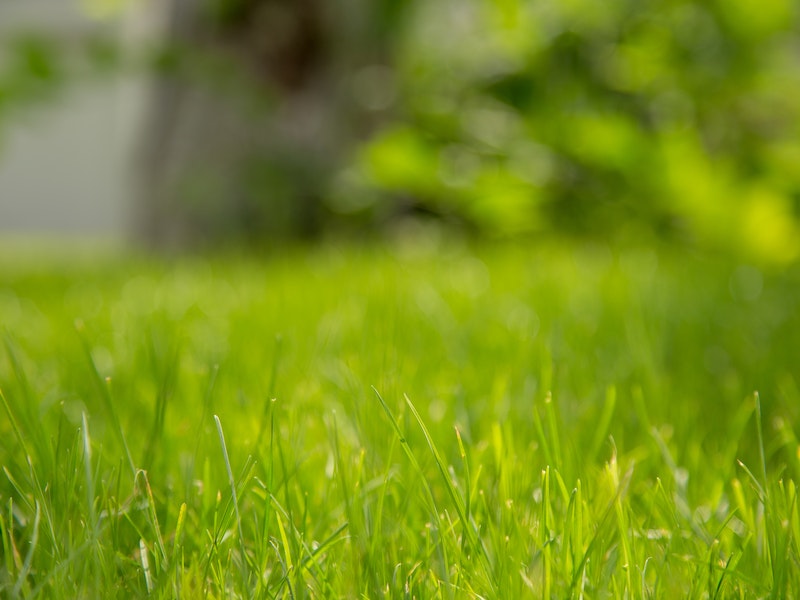
Photo Credit: Pexels
Bermudagrass is a classy choice for golf courses and commercial properties. Foot traffic doesn’t faze it, as this hardy grass type is built to withstand wear and tear. What does hurt bermudagrass is a lot of shade and cold winter temperatures.
Bermudagrass grows to be a vivid light green color. Hybrid bermudagrass has a fine texture, while the texture of common bermudagrass is usually coarser.
A sun-loving grass, bermudagrass is a deep-rooted grass that grows densely quickly. The thickness of the grass acts as a defense against weeds, forming a barrier that chokes them out. Bermudagrass is a high maintenance turf, but it’s durable and able to withstand rough weather conditions.
Classification: Warm-season grass
Spreads by: Below-ground rhizomes and above-ground stolons
Shade tolerance: Poor – needs full sun
Drought resistance: High
Foot traffic tolerance: High
Maintenance needs: High. Bermudagrass is a fast-growing and invasive grass. It needs to be mowed weekly to keep it from growing in garden beds and fertilized regularly.
Mowing height: 1-2 inches
Potential for disease: Good resistance against diseases, although it commonly suffers from diseases such as dollar spot, leaf spot, spring dead spot, and root decline. Bermudagrass has low resistance to insects and may be invaded by pests such as white grubs, armyworms, and webworms.
Soil pH: 6-6.5
Soil type: Tolerates most soil types.
Other notes: Bermudagrass only needs reseeded once a year. It requires regular mowing during the growing season to keep it at its ideal height.
3. Buffalograss
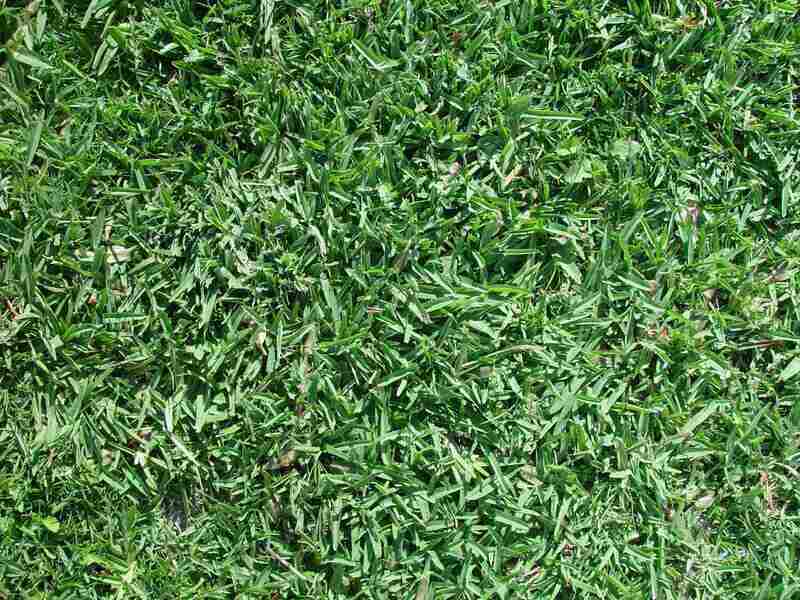
Photo Credit: Pixnio
If you dream of an evergreen lawn that even persists through the chilly winter months, then buffalograss is the grass for you. Buffalograss is a low-maintenance lawn that keeps its blue-green hue year-round.
Native buffalograss thrives in the western and central regions of the Great Plains, but there are new turf-type cultivars that are well adapted for home lawns. Despite being named for the bison that populates North America, buffalograss doesn’t like stampeding herds of visitors, making it bad for heavy foot traffic.
It can tolerate Tampa’s extreme heat and bouts with drought. Avoid planting buffalograss if you have a yard shaded by big big trees. Buffalograss doesn’t require much water, so homeowners have to be careful to avoid overwatering this type of grass. Since it has a more open growth pattern, weeds are always a problem..
Classification: Warm-season
Spreads by: Stolons
Shade tolerance: Low
Drought resistance: High
Foot traffic tolerance: Low
Maintenance needs: Low
Mowing height: 2-4 inches
Potential for disease: Good tolerance against diseases. Although buffalograss has a good tolerance against bugs, it tends to attract chinch bugs, white grubs, webworms, and mealyworms.
Soil pH: Between 6.5-7.5
Soil type: Native soils, not sandy soils
Other notes: Like with most grasses, it takes effort to get buffalograss established in your yard, but once they are established, they should be low maintenance. They don’t typically need dethatching or aeration, and they don’t require much fertilizing.
4. Centipedegrass
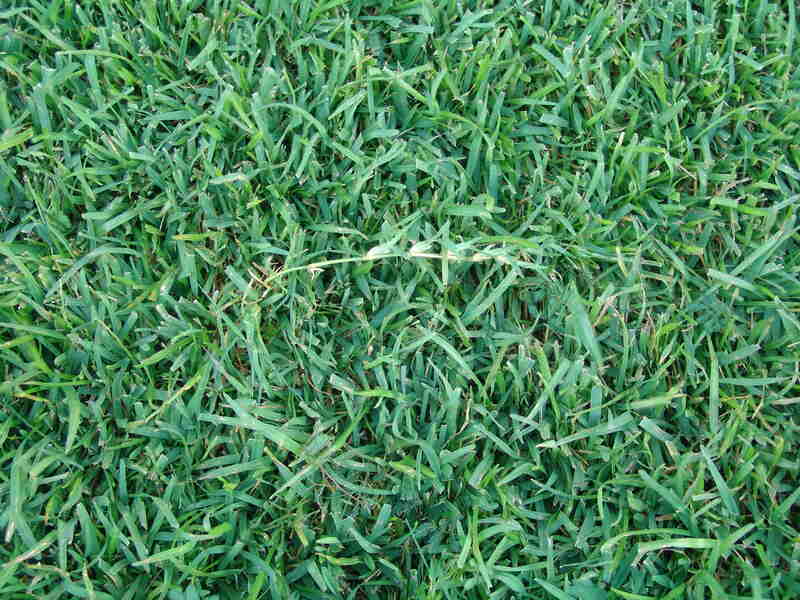
Photo Credit: James Becwar / Wikimedia Commons / CC BY-SA 3.0
If you are looking for a low-maintenance grass, centipedegrass is a good choice. Centipedegrass is durable and versatile, as it thrives in acidic and infertile soils with a low pH. It is a slow-growing grass, which means it doesn’t need to be mowed as often as other warm-season grasses. Centipedegrass is not a good grass if you have pets and kids because it doesn’t stand up to foot traffic. But it does hold up well during droughts.
Although it is an attractive grass, you won’t be the only one who finds centipedegrass appealing. Pests such as nematodes love centipedegrass. It’s also susceptible to fungal diseases and other pesky bugs.
Classification: Warm-season grass
Spreads by: Above-ground stolons
Shade tolerance: Moderate — at least six hours of full sun per day
Drought resistance: High
Foot traffic tolerance: Low
Maintenance needs: Low
Mowing height: 1.5-2 inches
Potential for disease: Good resistance to diseases and insects; may suffer from iron chlorosis or centipedegrass decline. Nematodes and ground pearl insects are a common insect problem for centipedegrass.
Soil pH: 5-6
Soil type: Sandy and infertile soils, silt, loam
Other notes: When it is first installed in your yard, centipedegrass will be high-maintenance until it is established in the yard, then it will be low maintenance and not require much care. Centipedegrass can be sensitive to over-fertilizing.
5. St. Augustinegrass
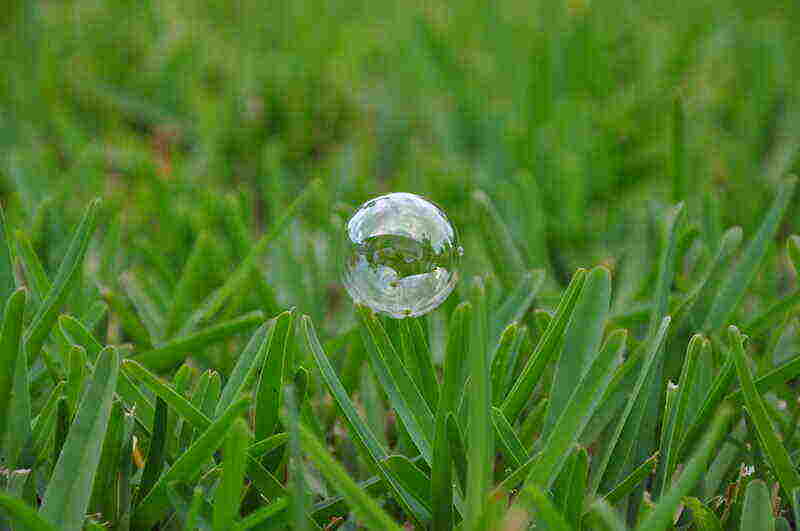
Photo Credit: Jay Morgan / Flickr / CC BY-ND 2.0
St. Augustinegrass is the most popular grass found in Florida lawns. Tolerant of heat and shade, St. Augustinegrass is a great fit for any Tampa yard shaded by trees.
A native to coastal areas, St. Augustinegrass performs best where there’s salty sea air and high moisture and humidity. Its thick, dark green blades go dormant in the winter and turn brown before returning to their vibrant color in the spring. There are several types of St. Augustinegrass, but there are two primary types: standard and dwarf cultivars.
St. Augustinegrass is used to getting a lot of water, so it will have to be watered often to keep it healthy and happy. But don’t give it too much water or fertilizer because it is susceptible to thatch. St. Augustinegrass grows in dense patches that makes it weed-resistant. And it’s not the best for families with pets or kids, since it doesn’t do well with heavy foot traffic.
Classification: Warm-season grass
Spreads by: Above-ground stolons
Shade tolerance: Moderate shade tolerance, among the highest of any warm-season grass; some cultivars more shade tolerant than others
Drought resistance: Moderate
Foot traffic tolerance: Moderate
Maintenance needs: Moderate; St. Augustinegrass grows quickly, so it will need frequent mowings
Mowing height: 2.5-4 inches (mow dwarf varieties from 2.5-3 inches; standard cultivars from 3-4 inches; mow tall in shade)
Potential for disease: Moderate to high; chinch bugs can be a problem with St. Augustinegrass. Nematodes, grubs, and webworms might also plague St. Augustinegrass, and it can suffer from diseases like large patch and gray leaf spot.
Soil pH: 6-7.5
Soil type: Tolerates many soil types; prefers moderately fertile and moist (not waterlogged) soils; not a highly drought-tolerant grass; doesn’t tolerate soil compaction
Other notes: St. Augustinegrass can be planted any time of year in Tampa. Prefers moist soils and mild winters; will thrive in more inland areas provided growing conditions are met; good salt tolerance
6. Zoysiagrass
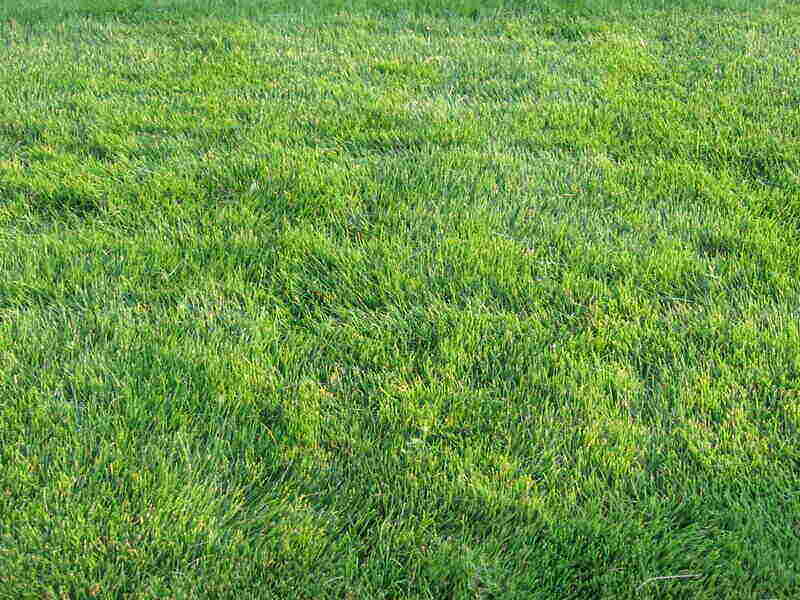
Photo Credit: Russbach / Wikimedia Commons / CC BY-SA 3.0
What makes Zoysiagrass so great for Tampa yards is its high salt tolerance. Zoysiagrass can endure some shade, but it thrives if it receives six to eight hours of sunlight a day.
Zoysiagrass is a great barefoot grass because it’s so soft to walk on. It’s the perfect grass for your family and pets because it accommodates a lot of rowdy play and outdoor activities while also being soft and comfortable to walk on.
Its growth pattern makes it difficult for weeds to take root among the dense, dark green grass blades. However, the dense growth requires weekly mowing during the growing season.
Classification: Warm-season grass
Spreads by: Rhizomes and stolons
Shade tolerance: Moderate
Drought resistance: High
Foot traffic tolerance: High
Maintenance needs: Low
Mowing height: 1-2.5 inches
Potential for disease: Low; good disease and insect tolerance overall. Might encounter problems with diseases such as brown patch, gray leaf spot, or take-all root rot. Insects like white grubs, chinch bugs, sod webworms, or mole crickets might pose a threat to zoysiagrass.
Soil pH: 6-6.5
Soil type: Well-drained soils. Adaptable to almost any kind of soil, from clay to sandy soil.
Other notes: Although Zoysia is usually low maintenance, it does produce thatch, which requires aeration and dethatching. Zoysiagrass is also a slow starter; new grass takes one to three months before it grows.
FAQs About Best Grasses for Tampa
Several types of sun-loving grasses thrive in Tampa, but the best types of grasses for lawns that receive a lot of direct sunlight include St. Augustine, Celebration bermudagrass, and Zoysiagrass.
Several types of sun-loving grasses thrive in Tampa, but the best types of grasses for lawns that receive a lot of direct sunlight include St. Augustine, Celebration bermudagrass, and Zoysiagrass.
Bermudagrass consumes the least amount of water, which means it doesn’t have to be watered as frequently and it is very drought-resistant. Other types of grass that are drought tolerant and can do well with little water include bahiagrass, centipedegrass, and buffalograss.
Choose Plant and Grass Varieties for Your Tampa Landscape
Tampa lawns need to withstand hot, humid temperatures and thrive in coastal climates. These varieties thrive in the Tampa Bay area, so you’ll want to consider what type of grass is the right fit for your yard.
Creating your perfect yard isn’t just finding the right type of grass for your lawn. There are other ways you can enhance your Tampa yard. Check out our list of low-maintenance landscaping ideas or our list on hurricane-resistant landscaping ideas designed to help your landscaping withstand harsh hurricane weather.
Don’t wait to install new sod. Contact a Tampa lawn care pro today so that you can have the lawn of your dreams.
Main Image Credit: Free Nature Stock / Canva / License